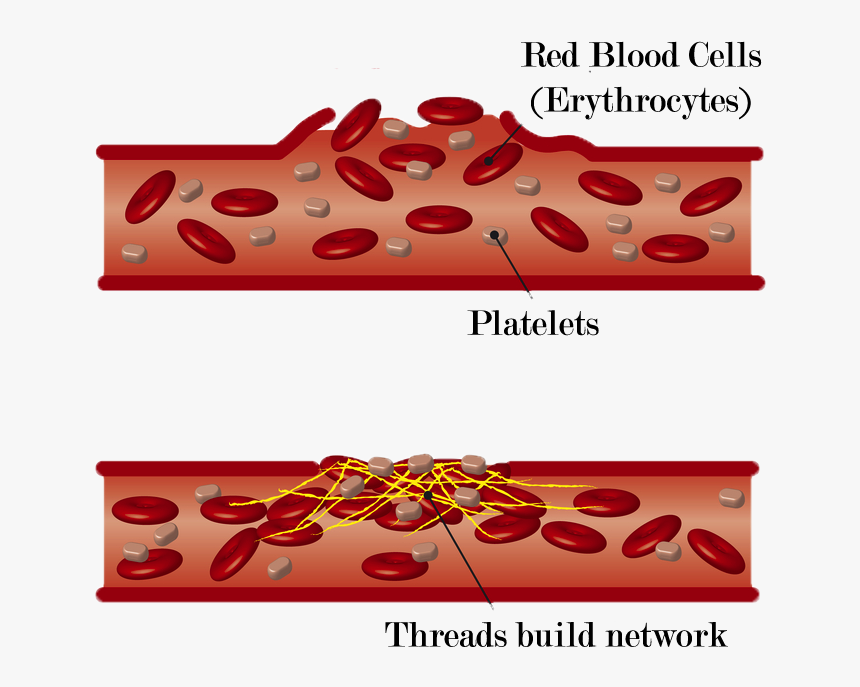Polycythemia Vera: Causes, Symptoms, and Complications of Elevated RBC and Platelets
What is polycythemia vera. How does it affect blood cell production. What are the main symptoms and risk factors of this rare blood cancer. What serious complications can arise from untreated polycythemia vera. How is polycythemia vera diagnosed and managed.
Understanding Polycythemia Vera: A Rare Blood Cancer
Polycythemia vera (PV) is an uncommon type of blood cancer that originates in the bone marrow. This condition causes an overproduction of red blood cells, leading to thickened blood and impaired blood flow. While rare, PV can have serious consequences if left untreated.
The exact cause of polycythemia vera remains unknown, but researchers have identified a specific genetic mutation as a key factor in its development. This mutation affects the JAK2 gene, which plays a crucial role in blood cell production regulation.
Key Characteristics of Polycythemia Vera
- Excessive production of red blood cells
- Thickened blood consistency
- Slow blood flow
- Potential for serious complications, including blood clots
- Gradual onset, often undetected for years
Recognizing the Symptoms of Polycythemia Vera
Polycythemia vera often develops slowly, and many individuals may not experience noticeable symptoms in the early stages. However, as the condition progresses, various signs and symptoms may emerge.
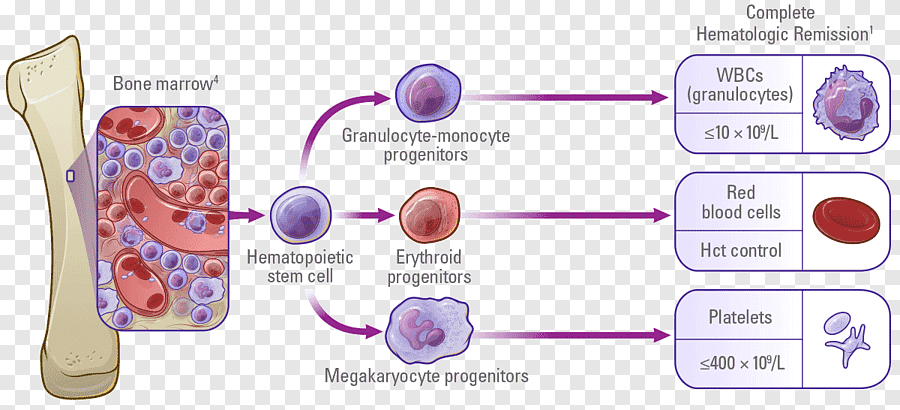
Common Symptoms of Polycythemia Vera
- Headache
- Dizziness
- Fatigue
- Blurred vision
- Itchiness, particularly after bathing or showering
- Numbness or tingling in extremities
- Abdominal discomfort and early satiety
- Unusual bleeding (e.g., nosebleeds, bleeding gums)
- Joint pain, often in the big toe
- Shortness of breath, especially when lying down
Are these symptoms always indicative of polycythemia vera? Not necessarily. Many of these symptoms can be associated with other conditions. However, if you experience persistent or concerning symptoms, it’s crucial to consult a healthcare professional for proper evaluation.
The Underlying Causes of Polycythemia Vera
Polycythemia vera results from a genetic mutation that disrupts normal blood cell production. Unlike many other genetic conditions, PV is not typically inherited from parents but occurs due to spontaneous mutations.
The Role of JAK2 Mutation
In the majority of polycythemia vera cases, a mutation in the JAK2 (Janus kinase 2) gene is responsible for the abnormal blood cell production. This mutation causes the bone marrow to produce excessive amounts of red blood cells, regardless of the body’s actual needs.
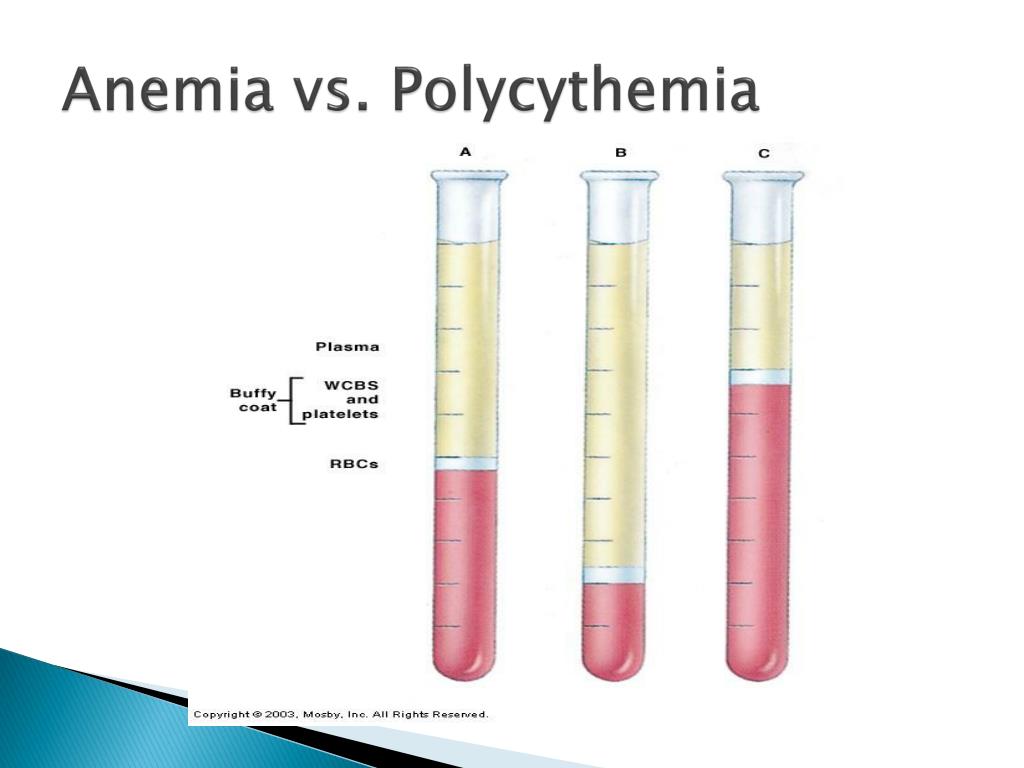
Why does this genetic mutation occur? The exact trigger for the JAK2 mutation in polycythemia vera remains unknown. Researchers continue to investigate potential environmental factors or other genetic predispositions that might contribute to the development of this mutation.
Risk Factors and Demographics of Polycythemia Vera
While polycythemia vera can affect individuals of any age, certain demographic factors are associated with a higher likelihood of developing the condition.
Key Risk Factors for Polycythemia Vera
- Age: Most common in adults between 50 and 75 years old
- Gender: More frequent in men, though women tend to develop it at younger ages
- Genetic predisposition: While not directly inherited, some families may have a higher incidence
- Environmental factors: Exposure to certain chemicals or radiation might increase risk, though this link is not firmly established
Is polycythemia vera preventable? Currently, there are no known preventive measures for polycythemia vera, as the primary cause – the genetic mutation – occurs spontaneously. However, understanding your risk factors can help in early detection and management of the condition.

Potential Complications of Untreated Polycythemia Vera
Without proper management, polycythemia vera can lead to several serious complications that significantly impact an individual’s health and quality of life.
Major Complications Associated with Polycythemia Vera
- Blood Clots: The thickened blood in PV increases the risk of clot formation, potentially leading to:
- Stroke
- Heart attack
- Deep vein thrombosis
- Pulmonary embolism
- Enlarged Spleen (Splenomegaly): The spleen may become overworked and enlarged, causing:
- Abdominal discomfort
- Early satiety
- Potential rupture in severe cases
- Peptic Ulcers: Increased red blood cell production can lead to:
- Open sores in the stomach lining
- Ulcers in the upper small intestine or esophagus
- Gout: High levels of red blood cells can result in:
- Joint inflammation
- Severe pain, often in the big toe
- Progression to Other Blood Disorders: In rare cases, PV may evolve into:
- Myelofibrosis (bone marrow scarring)
- Myelodysplastic syndrome
- Acute leukemia
How can these complications be prevented? Early diagnosis and proper management of polycythemia vera are crucial in minimizing the risk of these potentially life-threatening complications. Regular medical follow-ups and adherence to prescribed treatments play a vital role in complication prevention.
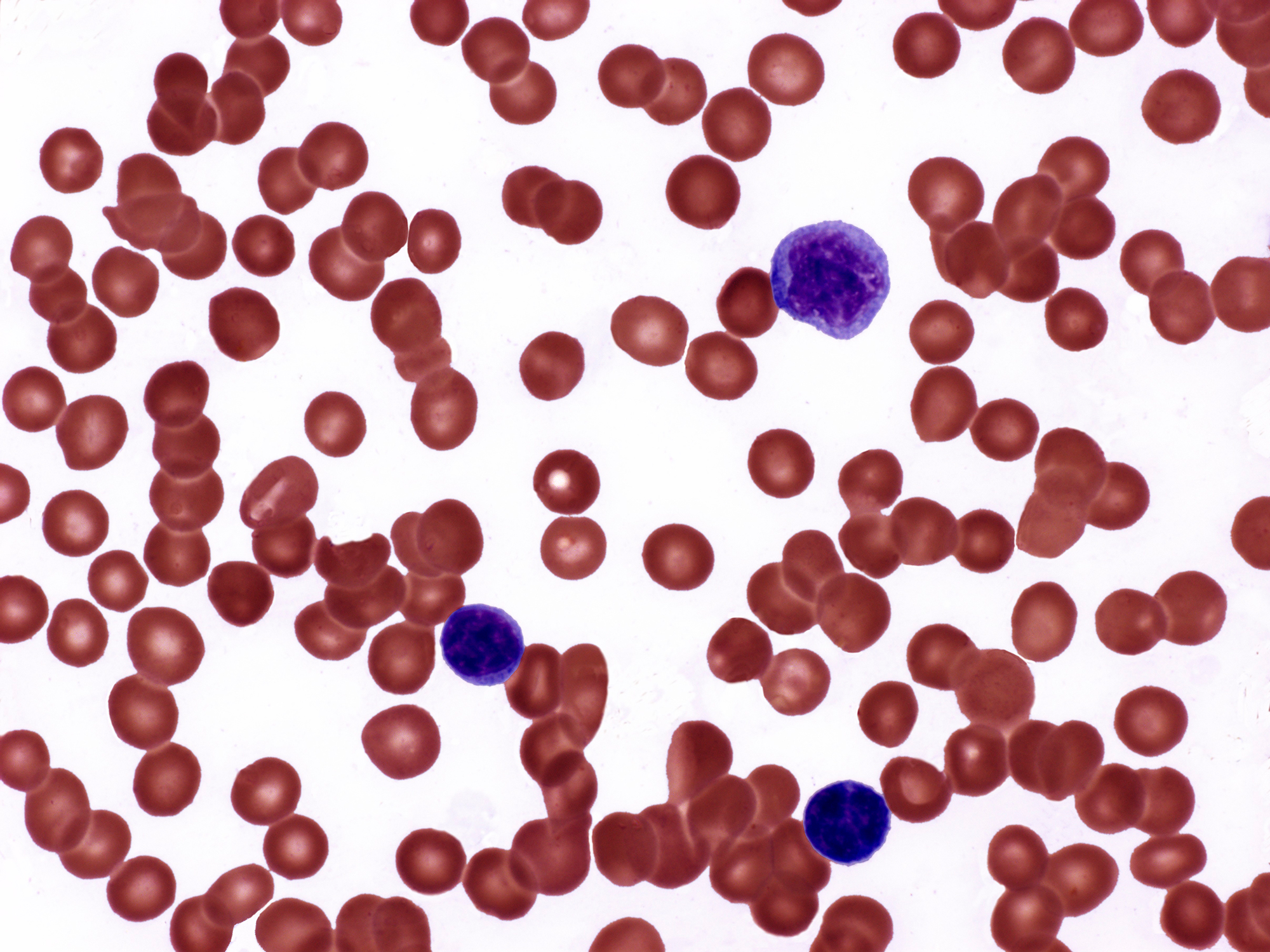
Diagnosis and Medical Evaluation of Polycythemia Vera
Diagnosing polycythemia vera often involves a combination of physical examination, medical history review, and various diagnostic tests. The condition is frequently discovered incidentally during routine blood tests performed for other reasons.
Common Diagnostic Approaches for Polycythemia Vera
- Complete Blood Count (CBC): Reveals elevated red blood cell, white blood cell, and platelet counts
- Erythropoietin Level Test: Measures the hormone that stimulates red blood cell production
- Bone Marrow Biopsy: Examines the bone marrow for abnormalities in cell production
- Genetic Testing: Identifies the presence of JAK2 or other relevant mutations
- Oxygen Saturation Test: Determines if increased red blood cell production is due to low blood oxygen levels
What criteria are used to diagnose polycythemia vera? The World Health Organization (WHO) has established specific diagnostic criteria for PV, which include both major and minor criteria. A definitive diagnosis typically requires meeting either both major criteria and one minor criterion, or the first major criterion and two minor criteria.
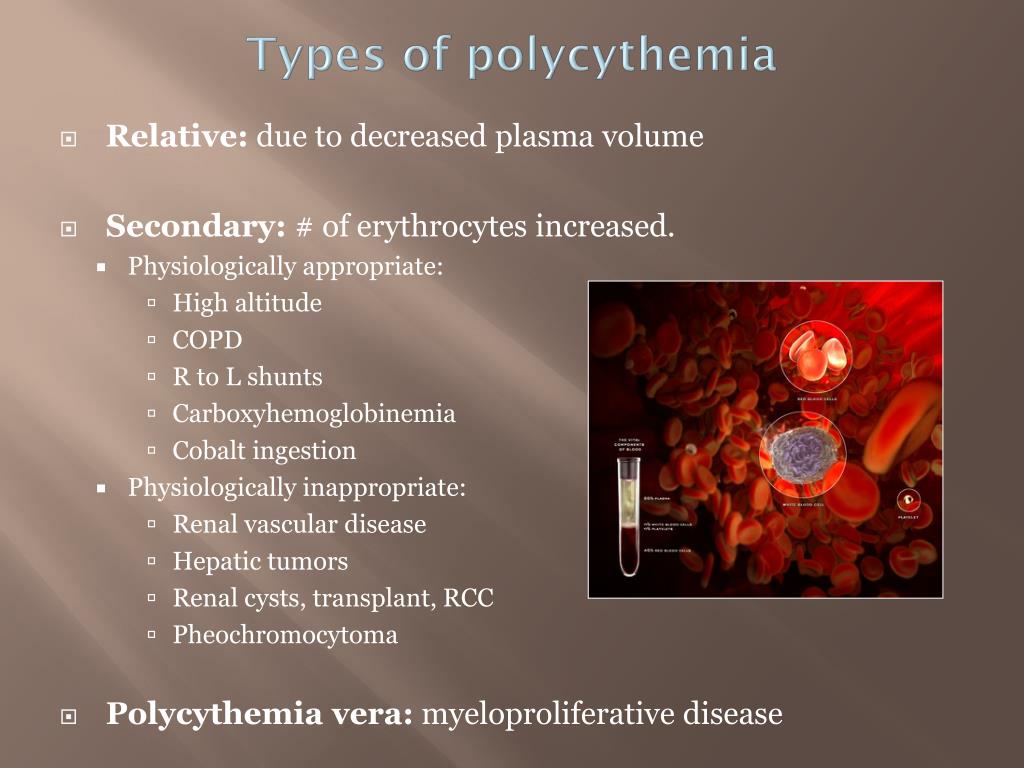
WHO Diagnostic Criteria for Polycythemia Vera
Major Criteria:
- Elevated hemoglobin levels or hematocrit
- Presence of JAK2 V617F or similar mutation
Minor Criteria:
- Bone marrow biopsy showing hypercellularity
- Low serum erythropoietin level
- Endogenous erythroid colony formation in vitro
Treatment Approaches and Management Strategies for Polycythemia Vera
While there is no cure for polycythemia vera, various treatment options are available to manage the condition effectively and reduce the risk of complications. The primary goals of treatment are to reduce blood thickness, alleviate symptoms, and prevent thrombotic events.
Common Treatment Modalities for Polycythemia Vera
- Phlebotomy: Regular blood removal to reduce red blood cell count
- Low-dose Aspirin: To reduce the risk of blood clots
- Hydroxyurea: Medication to suppress bone marrow activity and reduce blood cell production
- Interferon Alpha: Helps regulate blood cell production
- JAK2 Inhibitors: Targeted therapy for patients with the JAK2 mutation
- Antihistamines: To manage itching symptoms
How is the treatment plan determined for each patient? Treatment strategies are tailored to each individual based on factors such as age, overall health, severity of symptoms, and risk of complications. Regular monitoring and adjustments to the treatment plan are essential for optimal management of polycythemia vera.
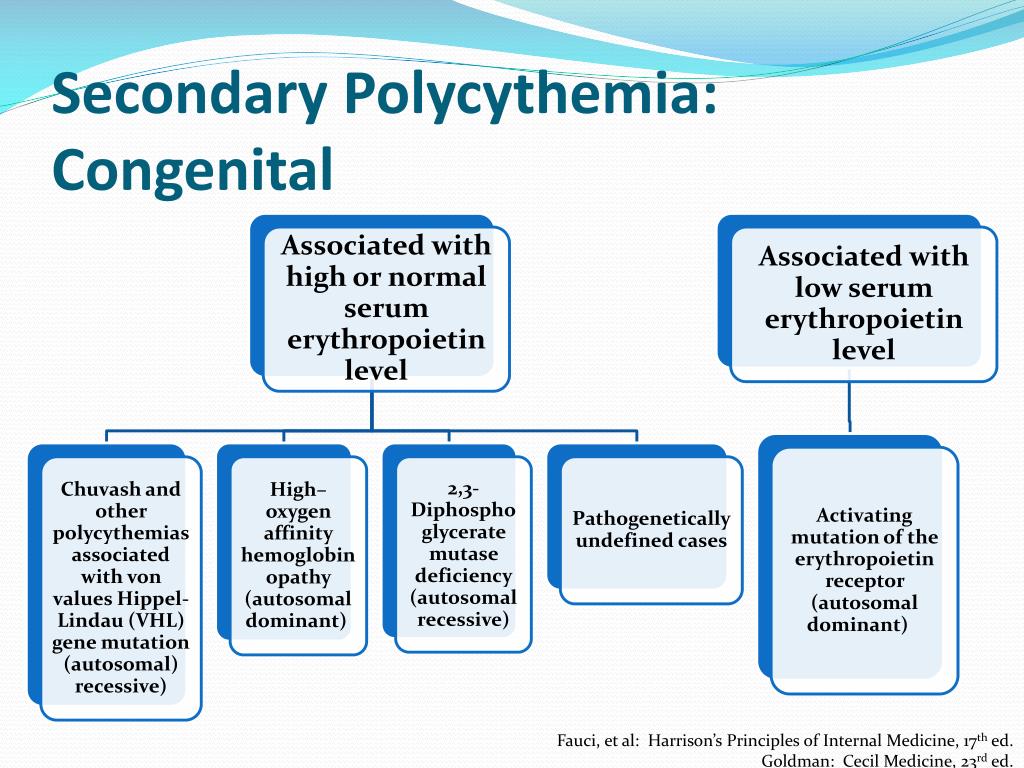
Living with Polycythemia Vera: Lifestyle Considerations and Self-Care
While medical management is crucial, individuals with polycythemia vera can take several steps to improve their quality of life and potentially reduce complications.
Lifestyle Recommendations for Polycythemia Vera Patients
- Maintain proper hydration to help reduce blood thickness
- Engage in regular, moderate exercise to improve circulation
- Avoid extreme temperatures, especially heat, which can exacerbate symptoms
- Quit smoking to reduce cardiovascular risks
- Maintain a healthy weight to minimize additional health complications
- Avoid activities with high risk of injury to prevent excessive bleeding
- Manage stress through relaxation techniques or counseling
Can dietary changes help manage polycythemia vera? While no specific diet has been proven to treat PV, a balanced, heart-healthy diet can support overall health and potentially reduce the risk of cardiovascular complications associated with the condition.
Nutritional Considerations for Polycythemia Vera
- Limit iron-rich foods, as excess iron can contribute to increased red blood cell production
- Consume plenty of fruits and vegetables for their antioxidant properties
- Choose lean proteins and healthy fats to support cardiovascular health
- Stay hydrated with water and other non-alcoholic, non-caffeinated beverages
- Consult with a nutritionist for personalized dietary recommendations
Living with polycythemia vera requires a multifaceted approach combining medical management, lifestyle modifications, and regular monitoring. By working closely with healthcare providers and adhering to treatment plans, individuals with PV can often lead fulfilling lives while managing their condition effectively.

Research and Future Directions in Polycythemia Vera Treatment
The field of polycythemia vera research is continuously evolving, with scientists and medical professionals working to improve understanding, diagnosis, and treatment of this rare blood cancer.
Current Areas of Research in Polycythemia Vera
- Genetic profiling to identify additional mutations beyond JAK2
- Development of new targeted therapies with improved efficacy and fewer side effects
- Investigation of potential biomarkers for early detection and disease progression
- Exploration of combination therapies to enhance treatment outcomes
- Studies on long-term outcomes and quality of life for PV patients
What promising developments are on the horizon for polycythemia vera treatment? Several clinical trials are underway exploring novel therapeutic approaches, including:
- Second-generation JAK inhibitors with improved selectivity
- Immunotherapies targeting specific pathways involved in PV progression
- Gene therapy approaches to correct the underlying genetic mutation
- Combination strategies using existing treatments in new ways
As research progresses, the hope is that new treatments will emerge, offering better symptom control, reduced side effects, and potentially even curative options for individuals living with polycythemia vera.
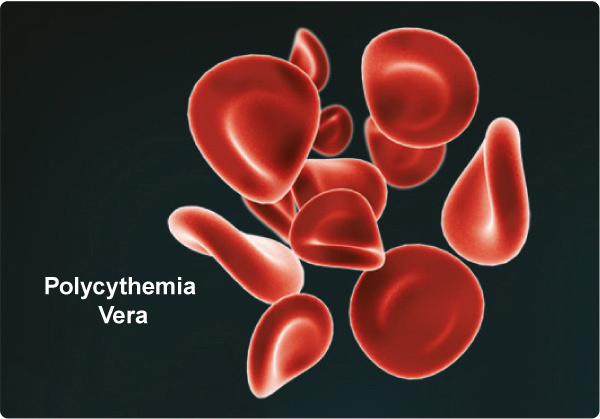
Support and Resources for Polycythemia Vera Patients and Caregivers
Living with a chronic condition like polycythemia vera can be challenging, but numerous resources and support systems are available to help patients and their caregivers navigate the journey.
Key Resources for Polycythemia Vera Support
- Patient advocacy groups and organizations dedicated to myeloproliferative neoplasms
- Online forums and support groups for connecting with others living with PV
- Educational materials from reputable medical institutions and cancer organizations
- Financial assistance programs for treatment and medication costs
- Counseling services to address the emotional and psychological aspects of living with a chronic condition
How can caregivers best support individuals with polycythemia vera? Caregivers play a crucial role in the management of PV. Some ways they can provide support include:
- Assisting with medication management and treatment adherence
- Accompanying patients to medical appointments and helping with record-keeping
- Encouraging and participating in healthy lifestyle choices
- Providing emotional support and understanding
- Learning about the condition to better anticipate and address needs
- Helping to coordinate care among different healthcare providers
By utilizing available resources and building a strong support network, individuals with polycythemia vera and their caregivers can better manage the challenges associated with this rare blood cancer and maintain a good quality of life.

Polycythemia vera – Symptoms & causes
Overview
Polycythemia vera (pol-e-sy-THEE-me-uh VEER-uh) is a type of blood cancer. It causes your bone marrow to make too many red blood cells. These excess cells thicken your blood, slowing its flow, which may cause serious problems, such as blood clots.
Polycythemia vera is rare. It usually develops slowly, and you might have it for years without knowing. Often the condition is found during a blood test done for another reason.
Without treatment, polycythemia vera can be life-threatening. But proper medical care can help ease signs, symptoms and complications of this disease.
Products & Services
Symptoms
Many people with polycythemia vera don’t have noticeable signs or symptoms. Some people might develop vague symptoms such as headache, dizziness, fatigue and blurred vision.
More-specific symptoms of polycythemia vera include:
- Itchiness, especially after a warm bath or shower
- Numbness, tingling, burning, or weakness in your hands, feet, arms or legs
- A feeling of fullness soon after eating and bloating or pain in your left upper abdomen due to an enlarged spleen
- Unusual bleeding, such as a nosebleed or bleeding gums
- Painful swelling of one joint, often the big toe
- Shortness of breath and difficulty breathing when lying down
When to see a doctor
Make an appointment with your doctor if you have signs or symptoms of polycythemia vera.
Causes
Polycythemia vera occurs when a mutation in a gene causes a problem with blood cell production. Normally, your body regulates the number of each of the three types of blood cells you have — red blood cells, white blood cells and platelets. But in polycythemia vera, your bone marrow makes too many of some of these blood cells.
The cause of the gene mutation in polycythemia vera is unknown, but it’s generally not inherited from your parents.
Risk factors
Polycythemia vera can occur at any age, but it’s more common in adults between 50 and 75. Men are more likely to get polycythemia vera, but women tend to get the disease at younger ages.
Complications
Possible complications of polycythemia vera include:
- Blood clots. Increased blood thickness and decreased blood flow, as well as abnormalities in your platelets, raise your risk of blood clots. Blood clots can cause a stroke, a heart attack, or a blockage in an artery in your lungs or a vein deep within a leg muscle or in the abdomen.

- Enlarged spleen. Your spleen helps your body fight infection and filter unwanted material, such as old or damaged blood cells. The increased number of blood cells caused by polycythemia vera makes your spleen work harder than normal, which causes it to enlarge.
- Problems due to high levels of red blood cells. Too many red blood cells can lead to a number of other complications, including open sores on the inside lining of your stomach, upper small intestine or esophagus (peptic ulcers) and inflammation in your joints (gout).
- Other blood disorders. In rare cases, polycythemia vera can lead to other blood diseases, including a progressive disorder in which bone marrow is replaced with scar tissue, a condition in which stem cells don’t mature or function properly, or cancer of the blood and bone marrow (acute leukemia).
Polycythemia vera – Symptoms & causes
Overview
Polycythemia vera (pol-e-sy-THEE-me-uh VEER-uh) is a type of blood cancer.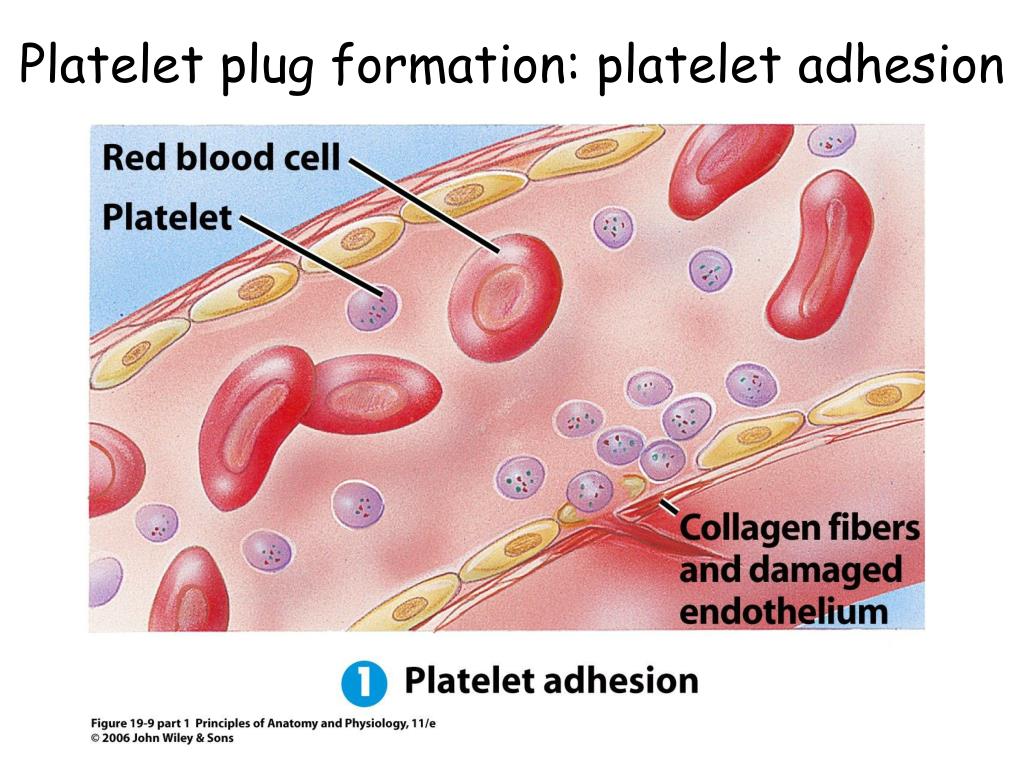 It causes your bone marrow to make too many red blood cells. These excess cells thicken your blood, slowing its flow, which may cause serious problems, such as blood clots.
It causes your bone marrow to make too many red blood cells. These excess cells thicken your blood, slowing its flow, which may cause serious problems, such as blood clots.
Polycythemia vera is rare. It usually develops slowly, and you might have it for years without knowing. Often the condition is found during a blood test done for another reason.
Without treatment, polycythemia vera can be life-threatening. But proper medical care can help ease signs, symptoms and complications of this disease.
Products & Services
Symptoms
Many people with polycythemia vera don’t have noticeable signs or symptoms. Some people might develop vague symptoms such as headache, dizziness, fatigue and blurred vision.
More-specific symptoms of polycythemia vera include:
- Itchiness, especially after a warm bath or shower
- Numbness, tingling, burning, or weakness in your hands, feet, arms or legs
- A feeling of fullness soon after eating and bloating or pain in your left upper abdomen due to an enlarged spleen
- Unusual bleeding, such as a nosebleed or bleeding gums
- Painful swelling of one joint, often the big toe
- Shortness of breath and difficulty breathing when lying down
When to see a doctor
Make an appointment with your doctor if you have signs or symptoms of polycythemia vera.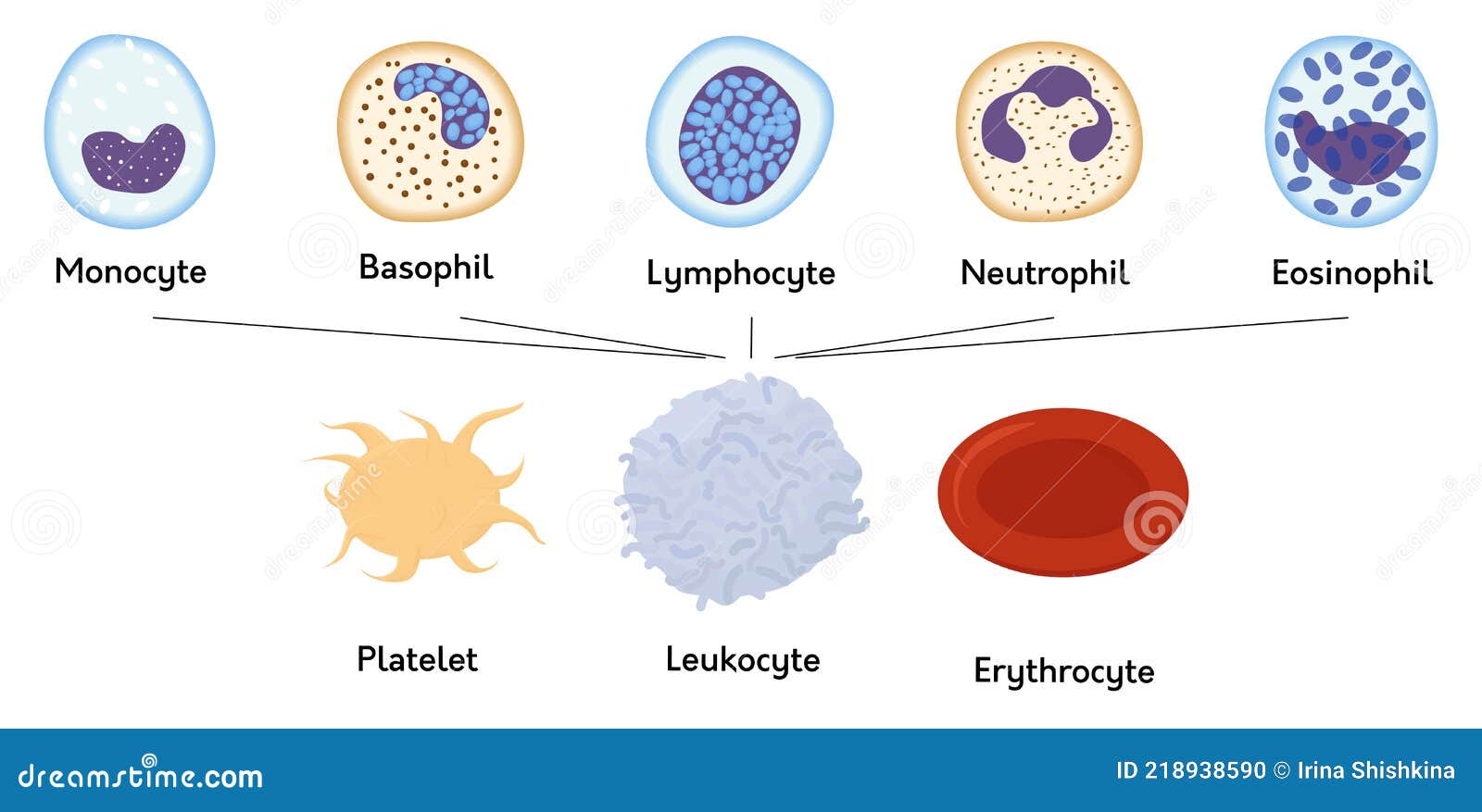
Causes
Polycythemia vera occurs when a mutation in a gene causes a problem with blood cell production. Normally, your body regulates the number of each of the three types of blood cells you have — red blood cells, white blood cells and platelets. But in polycythemia vera, your bone marrow makes too many of some of these blood cells.
The cause of the gene mutation in polycythemia vera is unknown, but it’s generally not inherited from your parents.
Risk factors
Polycythemia vera can occur at any age, but it’s more common in adults between 50 and 75. Men are more likely to get polycythemia vera, but women tend to get the disease at younger ages.
Complications
Possible complications of polycythemia vera include:
- Blood clots. Increased blood thickness and decreased blood flow, as well as abnormalities in your platelets, raise your risk of blood clots. Blood clots can cause a stroke, a heart attack, or a blockage in an artery in your lungs or a vein deep within a leg muscle or in the abdomen.

- Enlarged spleen. Your spleen helps your body fight infection and filter unwanted material, such as old or damaged blood cells. The increased number of blood cells caused by polycythemia vera makes your spleen work harder than normal, which causes it to enlarge.
- Problems due to high levels of red blood cells. Too many red blood cells can lead to a number of other complications, including open sores on the inside lining of your stomach, upper small intestine or esophagus (peptic ulcers) and inflammation in your joints (gout).
- Other blood disorders. In rare cases, polycythemia vera can lead to other blood diseases, including a progressive disorder in which bone marrow is replaced with scar tissue, a condition in which stem cells don’t mature or function properly, or cancer of the blood and bone marrow (acute leukemia).
The level of erythrocytes in the blood is increased – what problems can this indicate
- Health
The diagnostician explained what disorders and diseases this may be associated with, and why, in order to bring the tests back to normal, you need to walk more in the fresh air and drink enough water.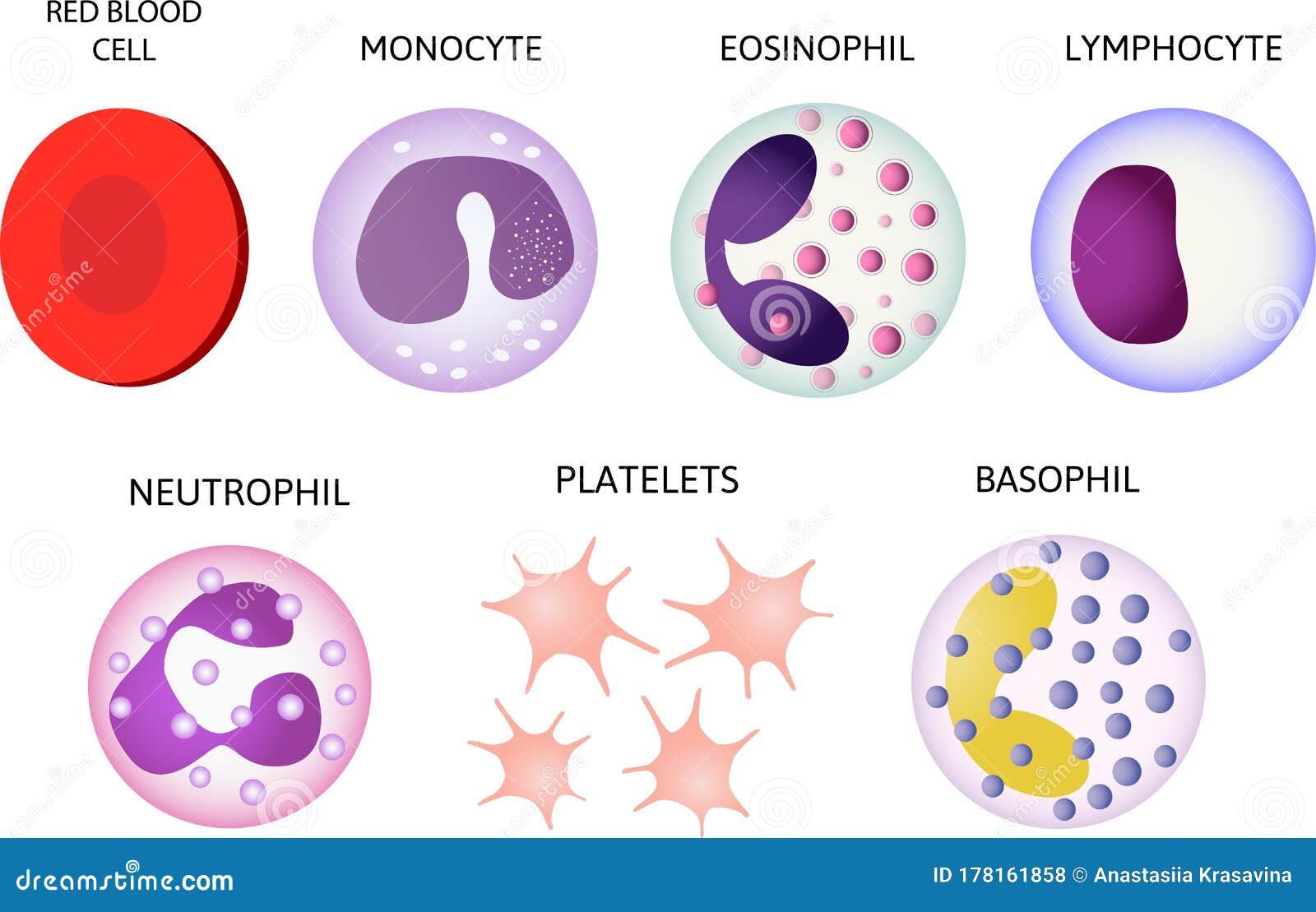
July 5, 2022
- Source:
- iStockphoto
The results of the analyzes are deciphered by the doctor, he can draw the right conclusions about possible problems in your body based on all the indicators. But you always want to understand in advance how serious the situation is. Take, for example, erythrocytes. What do their high scores mean? And what do they influence?
– Red blood cells are oxygen-carrying cells, – explained Olga Malinovskaya, doctor of clinical laboratory diagnostics, head of the medical department of the KDL laboratory network. “In perfect condition, they are of medium size, sufficiently iron-rich, with the correct shape of a biconcave disc.
Usually, all erythrocyte parameters of interest to the doctor are indicated in the complete blood count. The most indicative is the number of red blood cells in 1 liter of blood. For example, in anemia, the amount is reduced along with the amount of hemoglobin. Another parameter is the average erythrocyte volume – MCV.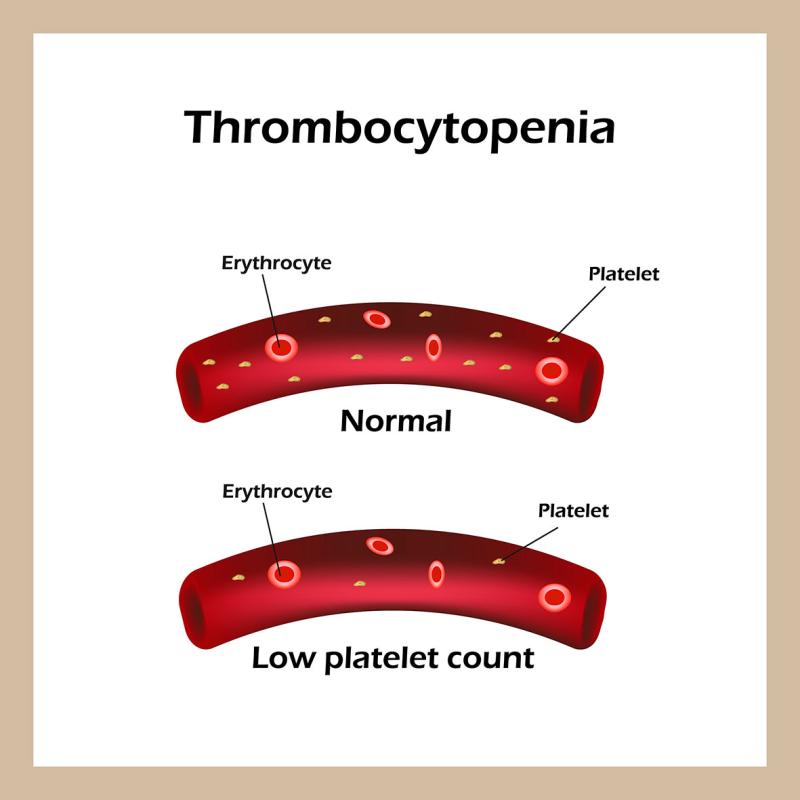
– It decreases with iron deficiency anemia, increases with anemia associated with a lack of vitamin B12 or folic acid, doctor Malinovskaya explains the changes in the parameters.
Read also
Red blood cells deliver oxygen, which we inhale to all organs and tissues of the body, and take away carbon dioxide, which we then exhale. Red blood cells live in the body for about four months, then they are destroyed.
— The hematopoietic system maintains a constant number of red blood cells in the bloodstream, — said Olga Malinovskaya. — More often patients encounter with a decrease in the number of red blood cells – anemia, but there are diseases and conditions when the number of red blood cells increases.
Dehydration
This is the most common cause of slightly elevated red blood cells.
– If it’s hot outside, you came to donate blood on an empty stomach and haven’t drank water since the evening, then with a high probability you will get slightly elevated hemoglobin, erythrocyte and hematocrit values, the doctor explained.
See also
Difficult external conditions
Doctors observe an increase in erythrocytes in the blood of residents of high-mountainous regions and regions of the far north. And this is a normal story, people can have red blood cells and hemoglobin slightly above normal due to the adaptation of body systems to harsh external conditions.
Polycythemia
The condition is due to the fact that the cells of the bone marrow produce an excessive amount of red blood cells. Also, other cells will be increased in the analysis – platelets and leukocytes. Blood becomes thicker , viscous, there is a risk of blood clots that can clog blood vessels and disrupt blood supply.
See also
Increasing the amount of erythropoietin
This substance is synthesized in the kidneys and stimulates the production of red blood cells by bone marrow cells.
– The body increases the production of erythropoietin when it considers that the body lives in conditions of lack of oxygen in order to provide all organs and tissues with more oxygen, – explained diagnostician Olga Malinovskaya.
Frequently elevated red blood cells can be in heavy smokers , people with chronic obstructive pulmonary disease , with heart defects and those who live in unfavorable environmental conditions.
Kidney disease
Elevated red blood cells are common in people with kidney disease.
– The fact is that they have a violation of the blood supply – narrowing of the renal arteries, tumors or cysts that compress the vascular pedicle of the kidney, – Malinovskaya clarified.
Text author: Alena Bezmenova
causes of increased and decreased values
Content
- 1 Erythrocytes in the blood: norm, causes of increase and decrease
- 1.1 Concept and meaning
- 1.1.1 What is the norm of erythrocytes in the blood
- 1.1.2 Why RBC counts are important
- 1.2 Related videos:
- 1.3 RBC counts for adults and children
- 1.3.1 RBC counts for adults
- 1.
 3.2 Red blood cell counts in children
3.2 Red blood cell counts in children
- 1.4 Causes of low red blood cell counts
- 1.5 Anemia
- 1.6 Genetic disorders that affect the red blood cell count
90 079 1.7 Chronic diseases and their impact on the level of erythrocytes in
- 1.1 Concept and meaning
- 1.8 Elevated red blood cells: causes
- 1.9 Polycythemia: causes, symptoms and treatment
- 1.10 Other blood disorders
- 1.10.1 Anemia
- 1.10.2 Leukemia
- 1.10.3 Thrombocytopenia
- 9 1.11.2 Wrong power supply
- 1.11.3 Output
- 1.12.1 Low red blood cells:
- 1.12.2 High red blood cells:
- 1.13.0.1 What causes an increase in the level of erythrocytes in the blood?
- 1.13.0.2 What symptoms may indicate a low level of red blood cells?
- 1.13.0.3 What is the normal level of red blood cells in women?
- 1.
 13.0.4 How does the level of erythrocytes in the blood change during pregnancy?
13.0.4 How does the level of erythrocytes in the blood change during pregnancy? - 1.13.0.5 What measures can be taken to correct the level of erythrocytes in the blood?
- 1.13.0.6 What are the indications for testing the level of erythrocytes in the blood?
Find out which red blood cell values are normal and what causes high and low levels. All about the physiology and diseases associated with the number of red cells in the blood.
Red blood cells are red blood cells that are responsible for transporting oxygen throughout the body. The normal level of red blood cells in the blood is one of the key indicators of human health. This parameter depends on many factors, such as nutrition, physical activity, environmental conditions.
If the level of red blood cells is higher than normal, it is possible that there is a violation in the formation of red blood cells in the body or some kind of disease is present.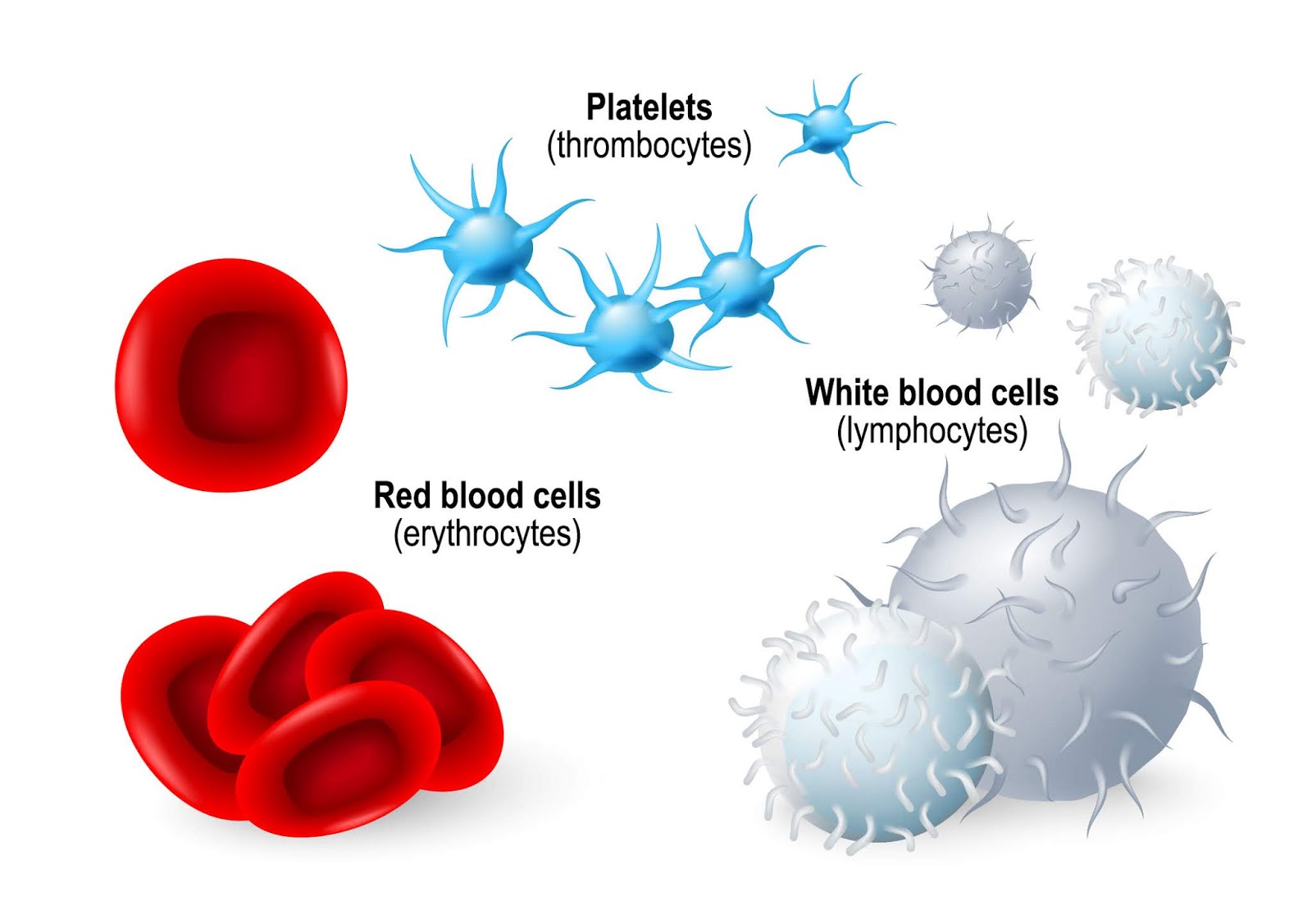 In this article, we will look at the causes of high and low RBC values and explain in detail how this characteristic affects health.
In this article, we will look at the causes of high and low RBC values and explain in detail how this characteristic affects health.
It is important to understand that all changes in the level of red blood cells require the attention of doctors and a preventive approach. Some diseases can become extremely serious if they are not addressed in a timely manner.
Concept and meaning
What is the red blood cell count
The red blood cell count is the acceptable range of red blood cells in the blood in a certain period of time. It is usually measured in terms of the number of red blood cells per microliter of blood. The normal level may vary in men, women and children depending on age, gender and health status.
Sedentary (less than 5000 steps)
50%
Sedentary (5000 to 10000 steps)
50%
Active (more than 10,000 steps)
0%
Why RBC count is important
RBC count is important to keep your body functioning properly.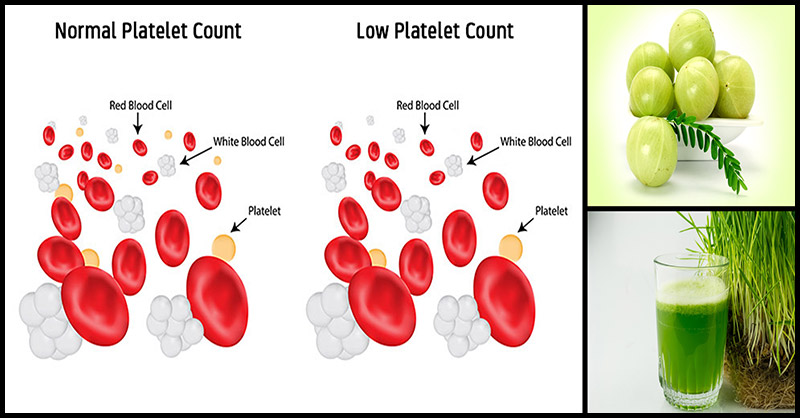 Red blood cells carry oxygen to the tissues and also help remove carbon dioxide from the lungs. If the level of red blood cells is lower or higher than normal, this may indicate the presence of diseases or health problems. Therefore, regular monitoring of the level of red blood cells is an important element in the prevention of diseases and maintaining the health of the body as a whole.
Red blood cells carry oxygen to the tissues and also help remove carbon dioxide from the lungs. If the level of red blood cells is lower or higher than normal, this may indicate the presence of diseases or health problems. Therefore, regular monitoring of the level of red blood cells is an important element in the prevention of diseases and maintaining the health of the body as a whole.
Related videos:
Red blood cell norms in the blood of adults and children
Red blood cell norms in the blood of adults from 3.8 to 5.0 million / μl in women.
In healthy adults, the level of red blood cells in the blood does not change throughout life, except for temporal variability associated with the physiological processes of the body.
Norms of erythrocytes in the blood of children
- In newborns, the level of erythrocytes reaches its maximum value and ranges from 4.
 2 to 7.4 million/µl.
2 to 7.4 million/µl. - In infants, the normal RBC count is 3.9 to 5.5 million/mcL.
- At the age of 1 to 14 years, the normal level of erythrocytes in the blood of children decreases significantly and ranges from 3.5 to 4.8 million/µl.
- Adolescents under 18 years of age have a higher red blood cell count than adults, approximately 4.0 to 5.5 million/mcL.
It is important to note that RBC levels may vary slightly in children based on race and gender.
Causes of low red blood cells
Anemia is the most common cause of low red blood cells. Anemia can be caused by a lack of iron, vitamin B12, or folic acid, as well as other factors such as blood loss, bone marrow disease, and hereditary factors.
Chronic diseases such as chronic infections, cancer and kidney disease can lead to a decrease in the number of red blood cells.
Acute blood loss caused, for example, by trauma, surgery or childbirth, can lead to a decrease in the number of red blood cells.
The body perceives its own red blood cells as foreign. This can occur in autoimmune diseases, in which the immune system attacks its own cells, including red blood cells.
heredity can also be a cause of low red blood cell count, as genetic mutations can lead to disruption of their formation or viability.
Anemia
Anemia is a body condition in which the number of red blood cells in the blood and/or their content in hemoglobin is below normal. Anemia can develop for various reasons and have various symptoms.
One of the most common causes of anemia is iron deficiency in the body. This element is necessary for the production of hemoglobin, and if it is not enough, then the number of red blood cells in the blood decreases.
Symptoms of anemia may include fatigue, weakness, pale skin, shortness of breath, dizziness, poor concentration, and others. Treatment for anemia depends on the cause and may include iron, vitamins, and other medications.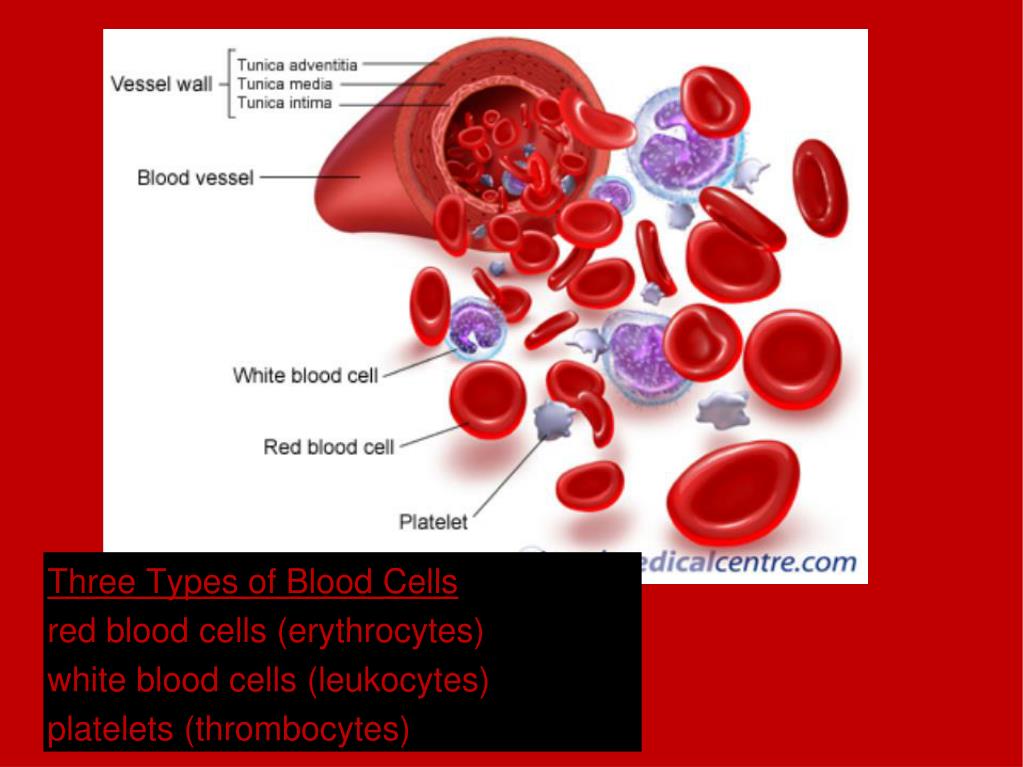
- Some types of anemia:
- Iron deficiency anemia – due to iron deficiency;
- Folate deficiency anemia – due to lack of folic acid;
- Vitamin deficiency anemia – occurs when there is a lack of vitamins necessary for the production of red blood cells.
- Some types of anemia:
Proper nutrition and regular examinations will help prevent anemia.
Genetic disorders that affect the rate of red blood cells in the blood
The rate of red blood cells depends on many factors, including hereditary predisposition to genetic diseases. Some of these disorders can lead to an increase in the level of red blood cells (erythrocytosis), while others can cause them to decrease (erythropenia).
Among the genetic disorders that affect the rate of erythrocytes in the blood, we can distinguish:
- Wilson-Microbe syndrome, in which erythrocytosis and an increase in the size of red cells caused by defects in the genes that regulate the work of erythrocytes;
- Porphyria, a hereditary disorder that interferes with the synthesis of hemoglobin and leads to an increase in red blood cells;
- Spherocytosis, a hemolytic disease associated with a defect in the red blood cell membrane, leading to the destruction of red cells and a decrease in their number in the blood.

However, genetic disorders are not the only reason for changes in the rate of erythrocytes in the blood, and additional studies are required for an accurate diagnosis.
Chronic diseases and their effect on the level of erythrocytes in the blood
The normal level of erythrocytes in the blood depends entirely on many factors, including human health. Chronic diseases can significantly reduce or increase the level of red blood cells.
Diseases such as chronic kidney failure, chronic fatigue syndrome anemia and many others can cause low red blood cells. In addition, chronic diseases can reduce the production of red blood cells and contribute to the development of anemia.
Some chronic diseases, such as heart failure, can reduce the amount of oxygen in the blood. As a result, the level of red blood cells in patients with similar diseases can increase significantly.
In general, any chronic disease can lead to changes in the level of red blood cells.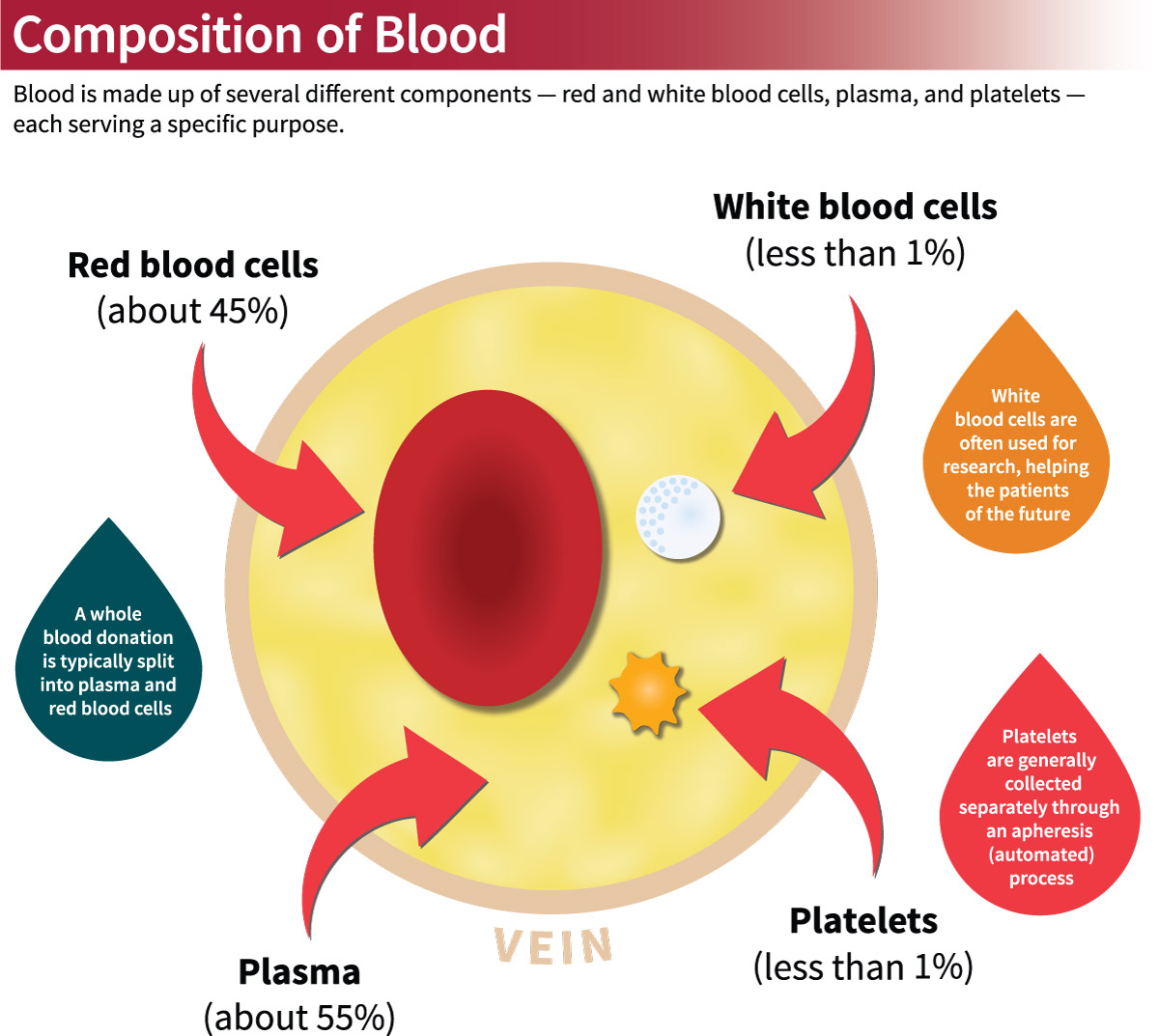 Therefore, it is very important to monitor your health and lead a healthy lifestyle, which will help reduce the risk of developing not only anemia, but also other chronic diseases.
Therefore, it is very important to monitor your health and lead a healthy lifestyle, which will help reduce the risk of developing not only anemia, but also other chronic diseases.
Elevated erythrocytes in the blood: causes
Elevated erythrocytes in the blood is called erythrocytosis, it can occur due to several reasons:
- Hypoxia. When the supply of oxygen to the body is disturbed in the bone marrow, an increase in the production of red blood cells occurs in an attempt to compensate for the distortion of gas exchange;
- Long stay at high altitude. Under such conditions, the level of oxygen is significantly lower than at sea level, and red blood cells begin to increase in the blood;
- Kidney diseases. When kidney function is reduced, they cannot remove excess red blood cells from the blood and their number increases;
- Leukemia, pneumonia, acute infections, and other conditions that increase blood production in the bone marrow.

It should be noted that erythrocytosis itself is not a disease, but only a symptom. It is not always accompanied by characteristic symptoms and is not dangerous at moderate loads.
Causes of elevated red blood cells Cause Description
| Hypoxia | Impaired oxygen supply to the body |
| Prolonged exposure to high altitude | Oxygen levels significantly lower than at sea level |
| Kidney disease | Decreased kidney function, inability to remove excess red blood cells |
| Leukemia, pneumonia , acute infections | Lead to increased blood production in the bone marrow. |
Polycythemia: causes, symptoms and treatment
Polycythemia is a disease in which the number of red blood cells is increased. As a result, blood viscosity increases, which can lead to serious complications.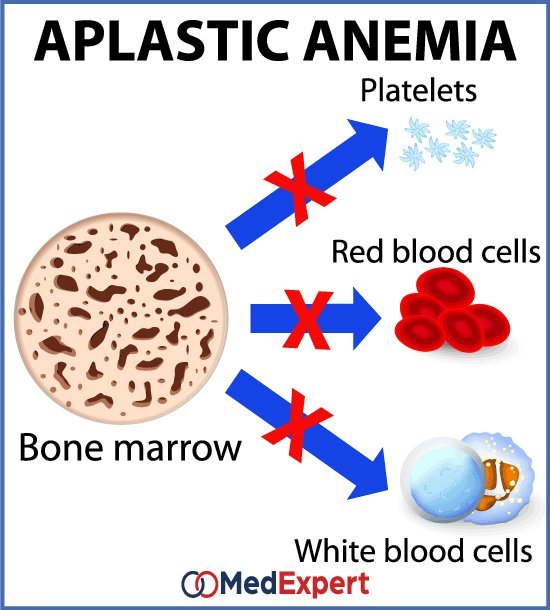
An increase in the number of red blood cells can be caused by various reasons. One of the most common is hypoxia – insufficient amount of oxygen in the body. Polycythemia can also occur with genetic disorders, the abuse of certain drugs, and as a result of prolonged exposure to high altitudes.
The main symptoms of polycythemia are headache, fatigue, excessive sweating, visual and hearing impairments. In more severe cases, signs of angina pectoris and cardiac arrhythmias may appear.
For the diagnosis of polycythemia, it is necessary to bring a blood test, which will determine the concentration of red blood cells and other indicators. Treatment includes reducing blood viscosity with medication and regular blood transfusions (phlebotomy). It is also necessary to avoid factors that lead to an increase in the level of red blood cells.
Other blood disorders
Anemia
Anemia is a blood disorder characterized by insufficient hemoglobin content in red blood cells.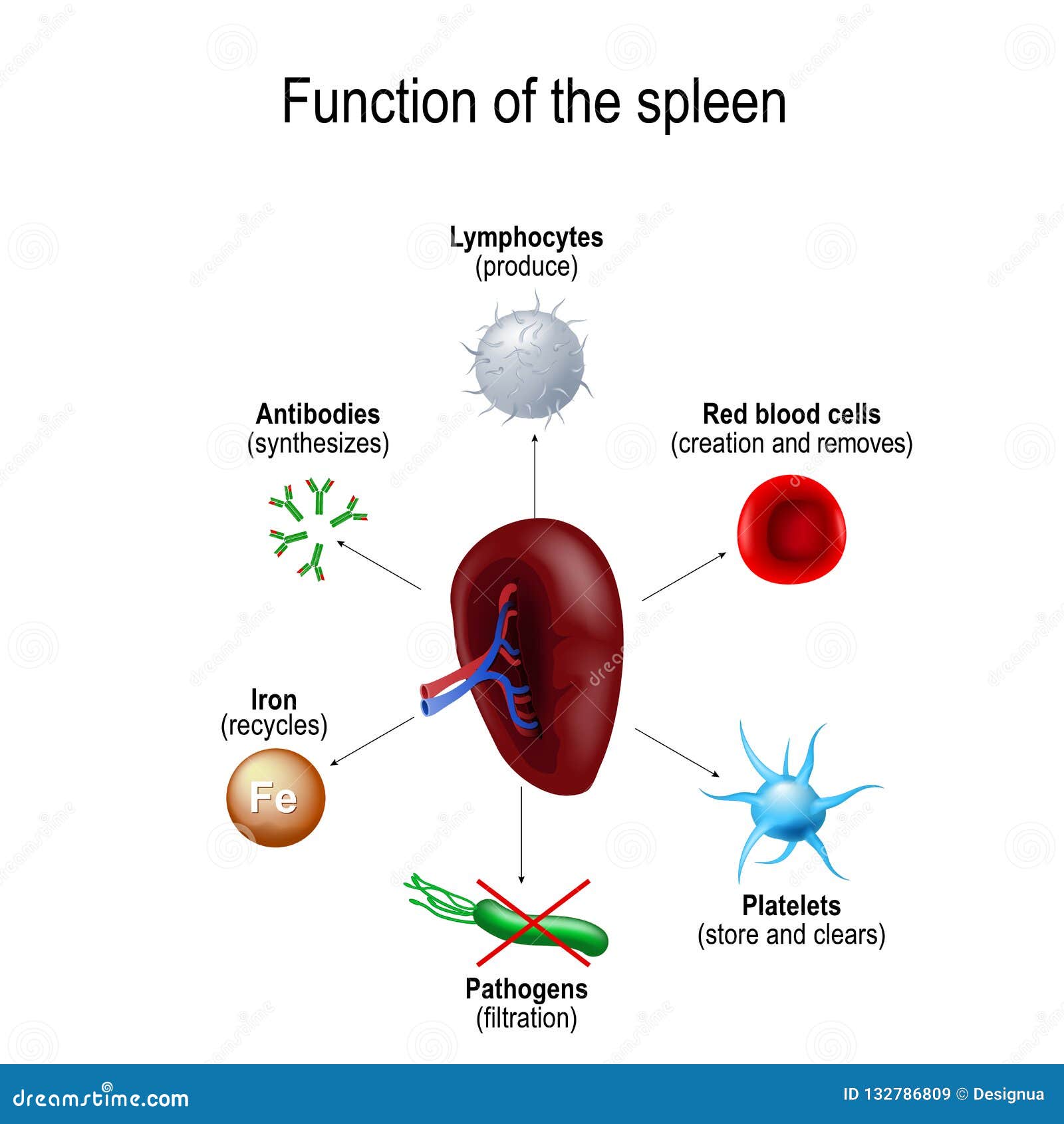 This can lead to a low level of red blood cells in the blood.
This can lead to a low level of red blood cells in the blood.
Causes of anemia include deficiency of iron, vitamin B12, or folate, red cell hemolysis, and other abnormalities in the production of red cells in the bone marrow.
Leukemia
Leukemia is a blood cancer that can cause an increase or decrease in red blood cells.
Leukemia is caused by abnormal white blood cells that interfere with the production of normal red blood cells in the bone marrow.
Thrombocytopenia
Thrombocytopenia is a blood disorder in which the level of platelets responsible for blood clotting is low. This can lead to problems with blood clots and heavy bleeding.
Decreased platelet levels can result from various diseases such as leukemia, Itsenko-Cushing’s syndrome, systemic lupus erythematosus, alcohol-related liver cirrhosis, and others.
The effect of obesity and malnutrition on the rate of red blood cells in the blood
Obesity
Obesity, which is characterized by an excess of adipose tissue in the body, can cause an increase in the number of red blood cells.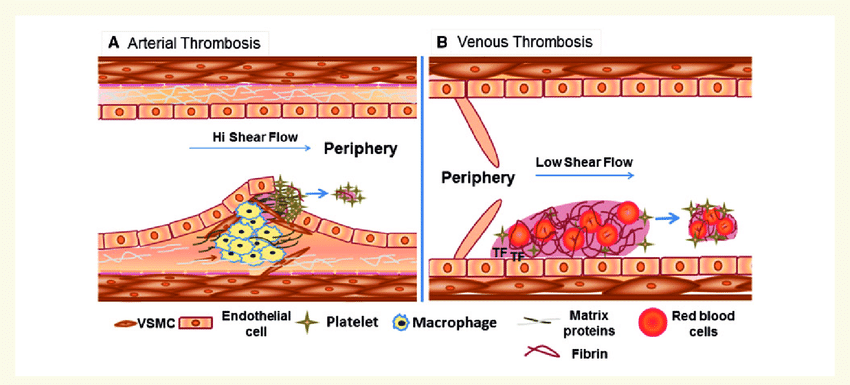 This is due to metabolic disorders and lack of oxygen in the tissues.
This is due to metabolic disorders and lack of oxygen in the tissues.
In addition, obesity can cause an increase in hemoglobin when the concentration of hemoglobin in red blood cells is higher than normal. This is possible due to an increase in the number of red blood cells in the blood and an increase in blood volume.
Improper nutrition
Improper nutrition, especially when accompanied by an excess of fats and carbohydrates, can lead to metabolic disorders and a decrease in the oxygen transport function of the blood.
Eating a large amount of fatty foods can lead to a decrease in the level of iron in the body and the development of iron deficiency anemia, in which the number of red blood cells in the blood decreases. Also, a frequent diet that includes a small amount of iron can lead to a similar effect on the red blood cell count.
Conclusion
Obesity and malnutrition, like other factors, can affect the rate of red blood cells. To increase the number of red blood cells in the blood, which corresponds to the norm, you need to monitor your diet, consume the necessary amount of iron and exercise to improve metabolism and maintain the oxygen transport function of the blood.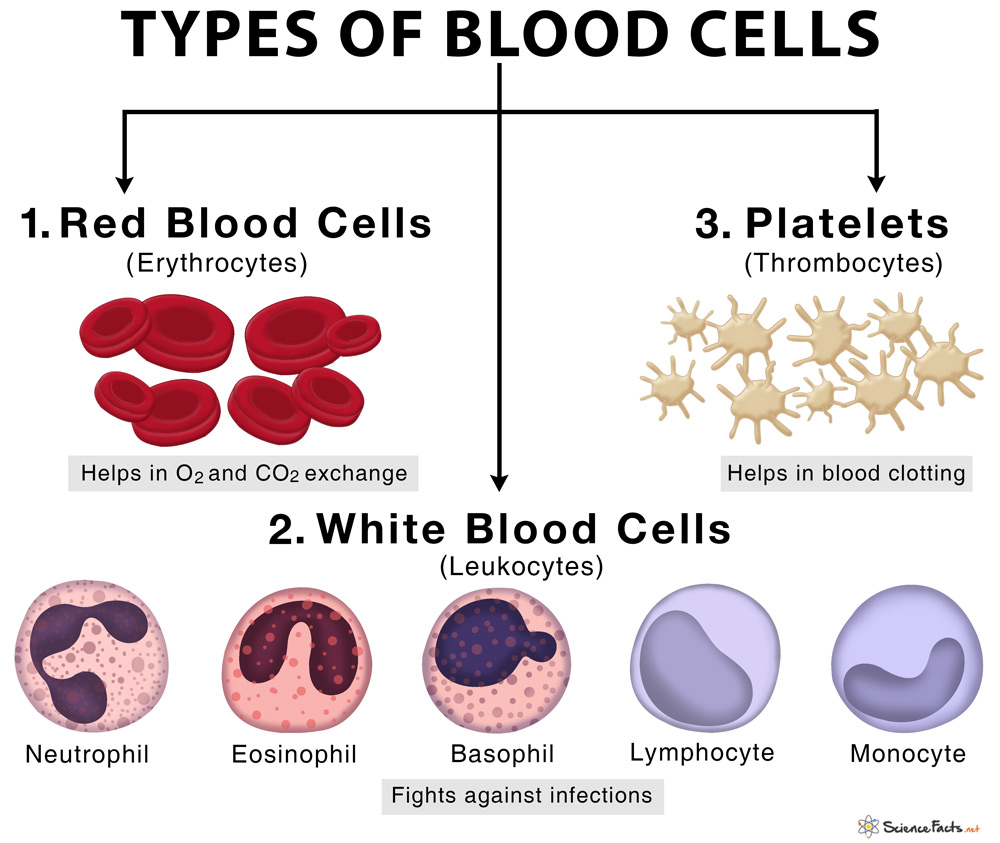
Prevention and treatment of abnormal red blood cells
Low red blood cells:
Proper nutrition is one of the key preventive measures. It is necessary to eat food containing iron (meat, fish, berries, vegetables), vitamins (especially groups B, C, E), trace elements (zinc, magnesium, cobalt). It is also recommended to exclude fatty and fried foods from the diet, drink alcohol and smoke.
In the treatment of reduced values of erythrocytes, preparations containing iron are prescribed (Ferro-foilgamma, Fenulet, Maltofer). It is also recommended to conduct a course of vitamin therapy, increase physical activity and it is necessary to adjust the diet.
Elevated erythrocyte values:
Prevention of elevated values comes down to a proper lifestyle: daily routine, sufficient physical activity, proper nutrition. It is necessary to exclude fatty, fried, sweet and smoked foods, alcohol from the diet.
The treatment of elevated erythrocyte values during the diagnosis and identification of the causes of deviations is prescribed by a doctor. Usually, blood circulation is carried out, treatment of other diseases (for example, hypertension, diabetes), drugs that thin the blood (aspirin, phlebodia) are prescribed.
Usually, blood circulation is carried out, treatment of other diseases (for example, hypertension, diabetes), drugs that thin the blood (aspirin, phlebodia) are prescribed.
Q&A:
What causes an increase in the level of erythrocytes in the blood?
Elevated red blood cells may be due to various causes such as dehydration, hypoxia, lung disease, heart failure, certain medications or smoking.
What symptoms may indicate a low level of red blood cells?
A low red blood cell count may present with the following symptoms: pale skin, fatigue, weakness, shortness of breath, palpitations, dizziness.
What is the normal level of red blood cells in women?
The normal level of red blood cells in women is 3.5 to 5 million/mcL.
How does the level of red blood cells in the blood during pregnancy?
The level of red blood cells in the blood of women during pregnancy is usually low, and there may be changes in other blood parameters associated with pregnancy, such as hemoglobin levels and color index.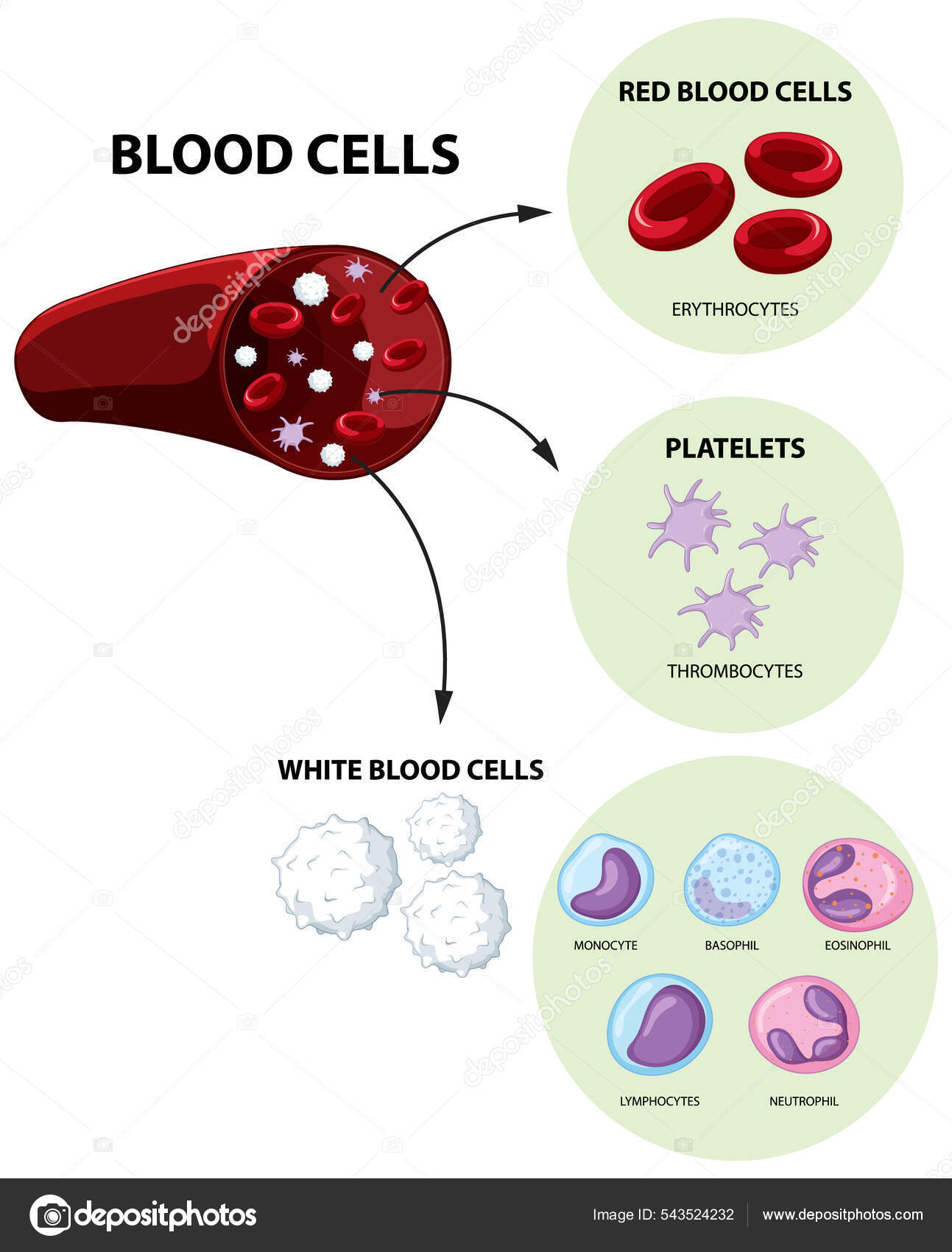



 3.2 Red blood cell counts in children
3.2 Red blood cell counts in children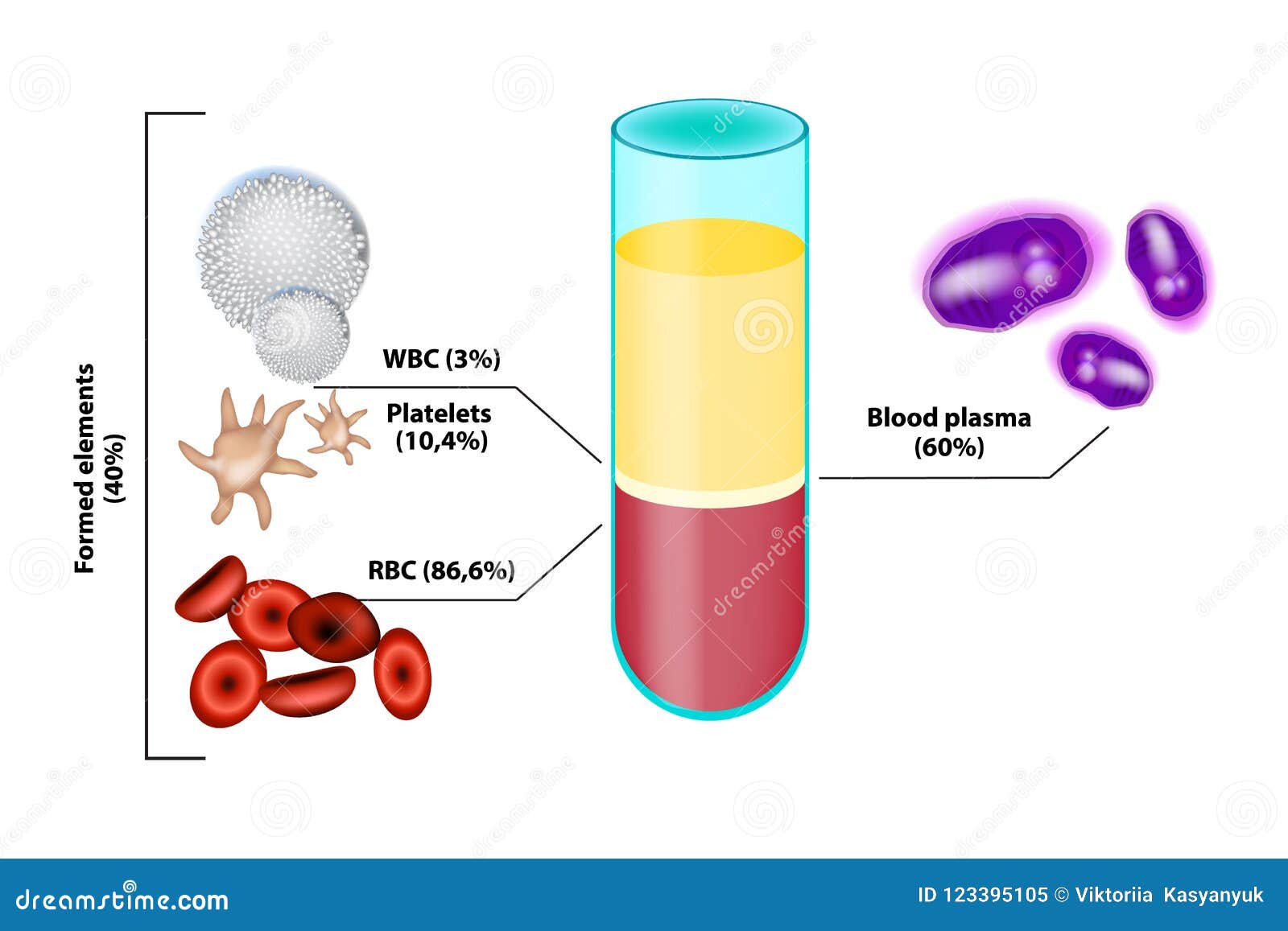 13.0.4 How does the level of erythrocytes in the blood change during pregnancy?
13.0.4 How does the level of erythrocytes in the blood change during pregnancy?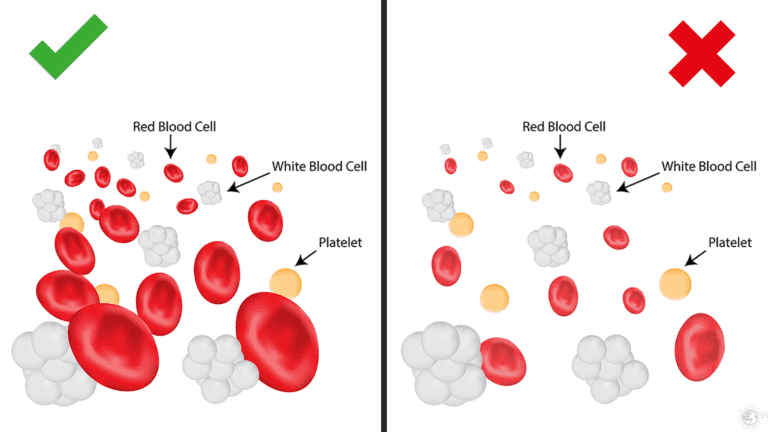 2 to 7.4 million/µl.
2 to 7.4 million/µl.
